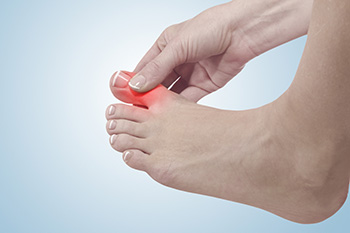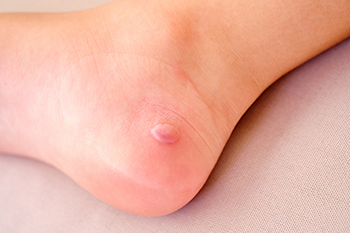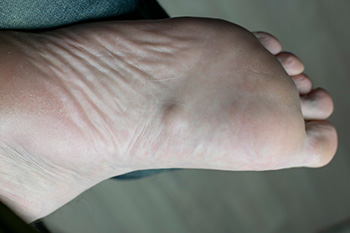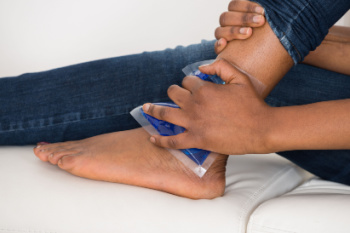
Gout and bunions can both cause pain in the big toe, but they differ in onset, causes, and appearance. Gout is a form of arthritis that comes on suddenly, often overnight, causing intense pain, redness, and swelling, usually in the big toe. It is caused by a buildup of uric acid crystals in the joint, often linked to diet, alcohol, or genetics. Bunions develop gradually. They appear as a bony bump on the side of the big toe joint and result from structural issues, wearing tight shoes, or inherited foot shapes. A bunion may ache and swell as the top of the big toe turns inward over time. A podiatrist can diagnose each condition through exams, imaging, and testing. For gout, they may prescribe medication and offer dietary guidance. For bunions, treatment ranges from padding, orthotics, and anti-inflammatory meds to surgery, in severe cases. If you have this type of toe pain, it is suggested that you schedule an appointment with a podiatrist for appropriate treatment.
Gout is a foot condition that requires certain treatment and care. If you are seeking treatment, contact one of our podiatrists from Footcare Now. Our doctors will treat your foot and ankle needs.
What Is Gout?
Gout is a type of arthritis caused by a buildup of uric acid in the bloodstream. It often develops in the foot, especially the big toe area, although it can manifest in other parts of the body as well. Gout can make walking and standing very painful and is especially common in diabetics and the obese.
People typically get gout because of a poor diet. Genetic predisposition is also a factor. The children of parents who have had gout frequently have a chance of developing it themselves.
Gout can easily be identified by redness and inflammation of the big toe and the surrounding areas of the foot. Other symptoms include extreme fatigue, joint pain, and running high fevers. Sometimes corticosteroid drugs can be prescribed to treat gout, but the best way to combat this disease is to get more exercise and eat a better diet.
If you have any questions please feel free to contact our offices located in Elmhurst Jackson Heights, Astoria, NY, and Rego Park, NY . We offer the newest diagnostic and treatment technologies for all your foot and ankle needs.




